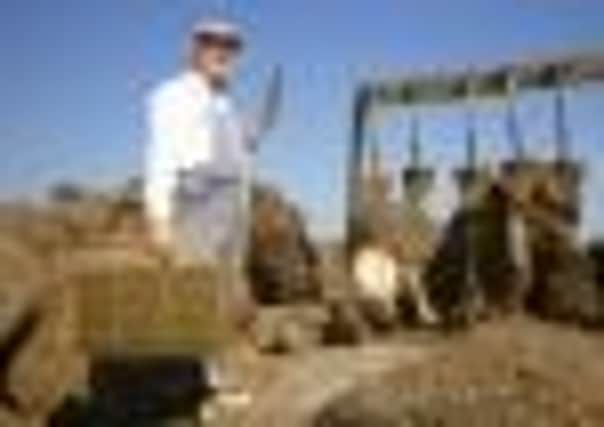Scot, showman and scul?tor supreme: Glasgow-born George Wyllie dies at 90


George Wyllie, the Glasgow artist who caught the public eye with eccentric works and was said to have had a major influence on the contemporary stars of the city’s art scene, has died at the start of a year of celebrations marking his 90th birthday.
Tributes came from leading Scottish artists and critics and First Minister Alex Salmond, who said his work “touched the lives of generations of Scots” with art that “always raised a smile but usually had a profound underlying message”.
Advertisement
Hide AdAdvertisement
Hide AdWyllie died in hospital in Inverclyde on Tuesday night after a short illness. His eldest daughter, Louise Wyllie, said he had been delighted by recent efforts to cement his artistic legacy.
“He really did live a life less ordinary,” she said. “There was no-one else like him and I suspect there never will be.”
Wyllie made his name as an artist with Straw Locomotive when it hung from a crane over the Clyde in 1987.
Paper Boat, seen around the world from Glasgow to New York, was another of his well-known “social sculptures”, along with Monument to Maternity, a huge nappy pin on the site of the former Rottenrow Maternity Hospital.
With a showman’s knack for eccentric, highly-public pieces, he famously described himself as a “scul?tor”, saying the question mark was too important to be left to the end.
The Turner Prize-nominated Scottish artist Nathan Coley, who trained at Glasgow School of Art, said: “I think the Straw Locomotive was a seminal work of the decade. He brought contemporary art to the general public.
“I think his personality was more of an effect on my generation than the specific work, in terms of being user friendly with the press and being a bit of a showman, as well as making the sculptures. It was an important influence.”
Mr Salmond praised Wyllie’s “thought-provoking sculpture garden”, The Stones of Scotland, just outside his office in St Andrew’s House, in Edinburgh. Artist Helen Denerley – known in Edinburgh for the giant giraffe sculptures outside the city’s Omni centre – spoke of “Genius and originality which was truly remarkable”.
Advertisement
Hide AdAdvertisement
Hide AdA resident of Gourock for more than 50 years, Wyllie was born in Shettleston, Glasgow, in 1921. His first job was as a shipyard office boy and while in the Royal Navy during the Second World War he visited Hiroshima soon after the atom bomb was dropped on the city. He became an artist in his 40s, but began to work full time after retiring as a customs officer at the age of 58.
The documentary maker and architecture expert Murray Grigor, a close friend and champion of Wyllie’s work, whose award-winning documentary on him The Why?s Man was made in 1990, called it a “sad day”.
He described him as “one of the most popular yet officially misunderstood artists in Scotland,” who had been “long scorned” by the National Galleries of Scotland.
The galleries have never shown or exhibited Wyllie’s work. But Simon Groom, director of the Scottish National Gallery of Modern Art, said: “He was unconventional, had a singular vision, a great imaginative approach to the world, which was full of questioning. It was humorous, independent-minded and had the rare ability to connect profoundly with people from all walks of life.”
The Creative Scotland arts agency gave a £160,000 award this year to celebrate Wyllie’s work through a Whysman Festival. His 90th birthday events included an exhibition at Glasgow’s Mitchell Library later this year and celebrations featuring the actors Alan Cumming, Sir Sean Connery, and Bill Paterson, alongside poet Liz Lochhead, Scotland’s national Makar. Paterson and actor Russell Hunter featured in Wyllie’s 1980s play, A Day Down a Goldmine, about the iniquities of the world banking system.